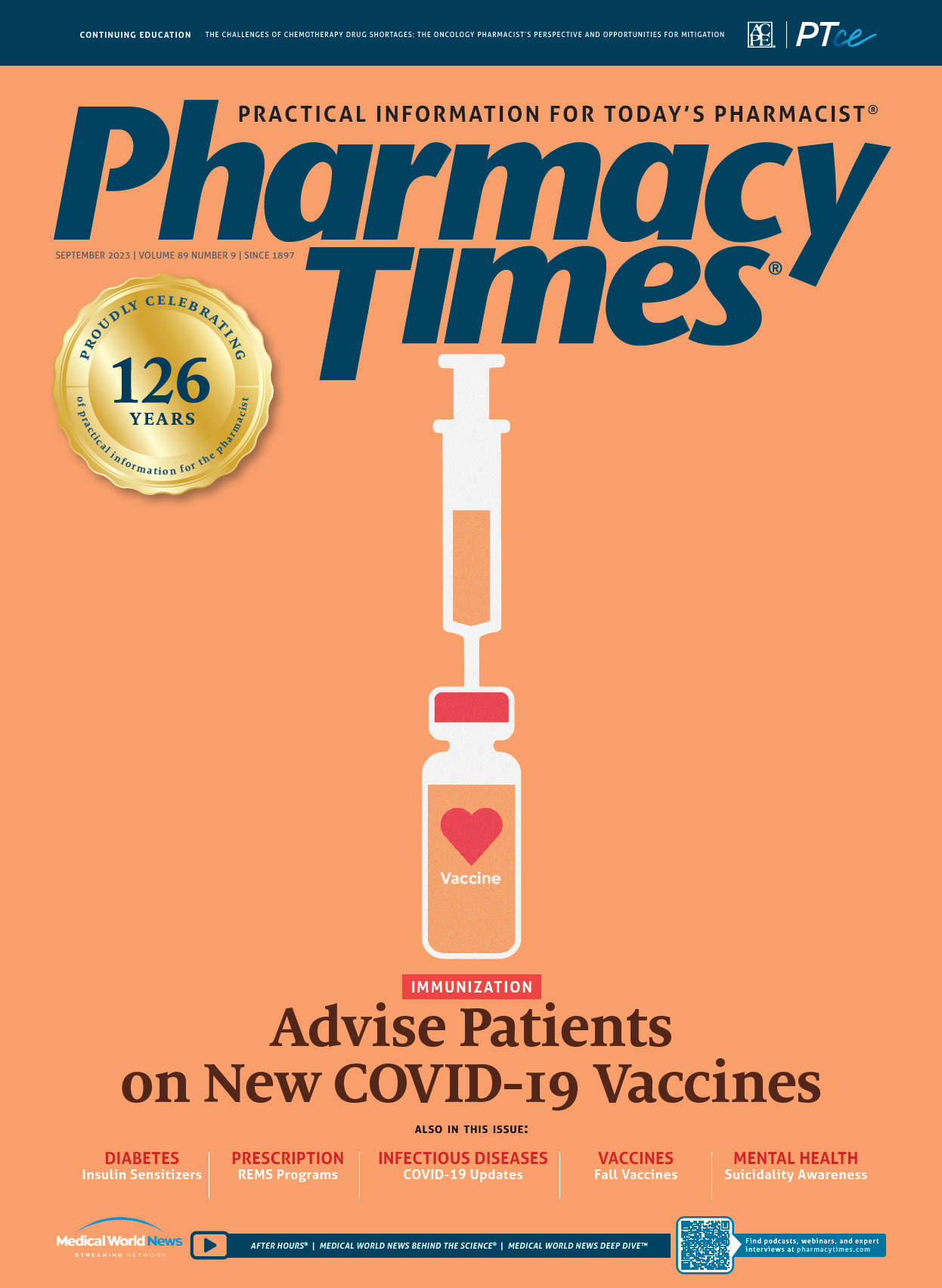Commentary
Article
Pharmacy Times
Blue Shield of California Drops Major PBM: Will It Be a One-Off or the First Domino?
Frustrations with the current means of achieving price discrimination have reached a boiling point, but the future remains uncertain.
Price discrimination is key to profitability for branded pharmaceutical manufacturers.
Some readers may see “price discrimination” and have visions of cheating, scandal, and unfair treatment of individuals or groups. However, third-degree price discrimination is a business and revenue model that is many decades—if not centuries—old, wherein some individuals pay more than others for the same product or service.
We’ve all been subject to price discrimination of various sorts as consumers. For instance, airline tickets are based on dynamic pricing with fluctuating demand based on the time of purchase. Take a cruise the second week of December and you will find a much different and more price-sensitive crowd sharing your vacation. Other examples include a student discount for the gym or a late-afternoon senior rate at a restaurant.
Third-degree price discrimination is key to pharmaceutical manufacturers because of the way the United States chooses to finance health care goods and services. Rather than lump all patientconsumers into the same financing vehicle or risk pool, we split them into broad groups, such as commercial/employer (employers, employees, and individual purchasers who pay the most), Medicare (individuals and taxpayers who pay the next most), and Medicaid (taxpayers who pay the least, along with often modest co-payments from individuals). From a manufacturer’s perspective, price discrimination is an essential and unavoidable business and revenue model because of the large up-front investments made to bring products to market. Because patients cannot resell their prescriptions, price discrimination by insurance coverage (and now patient assistance programs) is the mainstay model.
Image credit: Weyo - stock.adobe.com

How Drug Rebate Strategies Became the Primary Means of Price Discrimination
The valid need for price discrimination was tested when the federal government called for negotiating drug prices with manufacturers for Medicaid programs. The idea was to collate a larger group purchasing influence for massive numbers of patient-consumers, represented by the government, that paid a very small portion of the total cost of the products and were extremely price sensitive.1 Pharmaceutical manufacturers ultimately agreed to charge states and the federal government the lowest price instead of having a direct negotiation under the Omnibus Budget Reconciliation Act of 1990, but with the caveat that it be done as a rebate program.1 This caveat was an attempt to hide the actual lowest price to maintain higher prices for those patient-consumers who were part of groups with more income and robust premiums, while paying Medicaid the lowest price.
After rebates or net price, even the lowest price usually generated some level of margin for the manufacturer against the low cost of producing the next pill. This approach also made sure prescribers would reflexively prescribe their product to commercial insurance members. From there, the difference between the list price (dollars received by the manufacturer) and the net price after they pay out rebates continued growing.
As Generic Dispensing Rates Increase, Rebate Strategies Become a Primary Profit Center
Through the 1980s, 1990s, and the turn of the century, pharmacy benefit managers (PBMs) had near-universal alignment with their customers, as branded drugs were subjected to prior authorizations and other limits to help purchasers manage drug costs. The largest of those savings came from incentivizing brand-to-generic switches for blockbuster drugs. However, as the generic dispensing rate increased from 50% to 60%—and on up to more than 90% today—that alignment no longer produced the same savings for purchasers or profits for PBMs. Simultaneously, manufacturers were feeling more and more pressure to concede larger and larger rebates, sometimes offering the brand drug for less than its comparable generic.
Employers, Taxpayers, and Member of High-Deductible Plans Grow Angry
As PBMs became drunk on rebates over the past decade, they realized that a lack of transparency could also be carried through on the generic side, with the sell side of the equation at the pharmacy. More and more medications became cheaper and fell below customary co-payments, leading to gag clauses in PBM pharmacy contracts to ensure the patient used insurance to generate the economic spread for the PBM, and to a lesser extent the health plan. The development of spread pricing exploded and offered another profit model with a hidden buy-sell arrangement instead of published transaction fees. Over time, taxpayers grew angrier and individuals with high deductible plans started to wonder why it was cheaper to not use their insurance to purchase their medications.
Wall Street Sees Benefits of Vertical Integration
Complexity and opacity often lead to arbitrage opportunities, and the explosion of vertical integration during the 2010s brought vertical integrations as Wall Street looked around and realized that the PBMs were driving sector profitability. This realization led to integrations with insurance and health care providers, creating a system revolving around drug channeling and keeping money in the same ecosystem. Thus, we entered the era of the big 3 vertically integrated companies at the highest levels of the Fortune 500 list each year: Cigna, CVS, and UnitedHealth Group.
Blue Shield of California Makes Potentially Industry-Changing Decision
On August 17, 2023, Blue Shield of California dropped CVS, one of the big 3 PBMs.2 Normally, this wouldn’t be big news, as the custom is to bounce to 1 of the other 2 major PBMs or bring the functions in-house for their own vertical integrations. However, Blue Shield of California made an eye-popping decision by awarding the job to a constellation of solutions, using Abarca Health (a relatively unknown entity) to run claims through Mark Cuban’s Cost Plus Drug Company and his network of pharmacies and solutions, and using Amazon Pharmacy to fill in any cracks.2 This could be the first domino to fall, much like the major cable companies just a few short years ago that bundled everything for purchasers to create the illusion of choice.
Of course, Cuban’s play is bundling independent pharmacies that have trouble branding themselves in aggregate. What’s more, although Blue Shield of California says it will save $500 million by doing this, it would seem that its goal is to eliminate spread pricing with pharmacies because it will retain CVS for specialty—which is the majority of the drug costs as of 2022 and for which the rebate game is most rife.2 One notable side effect could be the continued bifurcation of branded and generic medications.
What's Next
Will the actions of Blue Shield of California be a signal for other nonvertically integrated health plans to change course, or for employers to be empowered under rules established in the Employee Retirement Income Security Act of 1974? Or will the big 3 PBMs upgrade and update their services, changing and evolving their business model yet again with more transparency and getting into health care services and remote care, either with or without community pharmacies? Cigna and UnitedHealth Group have already announced new service lines with independent networks, whereas CVS already owns the largest network of pharmacies in the country.
Many questions remain, but regardless, it’s going to be an interesting next couple of years.
About the Author
Troy Trygstad, PharmD, PhD, MBA, is executive director of CPESN USA, a clinically integrated network of more than 3500 participating pharmacies. He received his doctor of pharmacy and master in business administration degrees from Drake University and a doctorate in pharmaceutical outcomes and policy from the University of North Carolina.
References
1. Hayes TO. Primer: the Medicaid drug rebate program. American Action Forum. February 7, 2019. Accessed August 21, 2023. https://www.americanactionforum.org/research/primer-the-medicaid-drug-rebateprogram
2. Blue Shield of California unveils first-of-its-kind model to transform prescription drug care; save up to $500 million on medications annually. News release. Blue Shield of California. August 17, 2023. Accessed August 21, 2023. https://news.blueshieldca.com/2023/08/17/pharmacy-carereimagined






